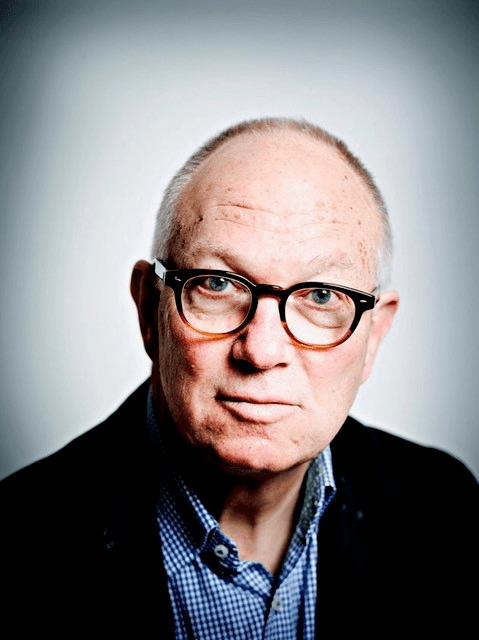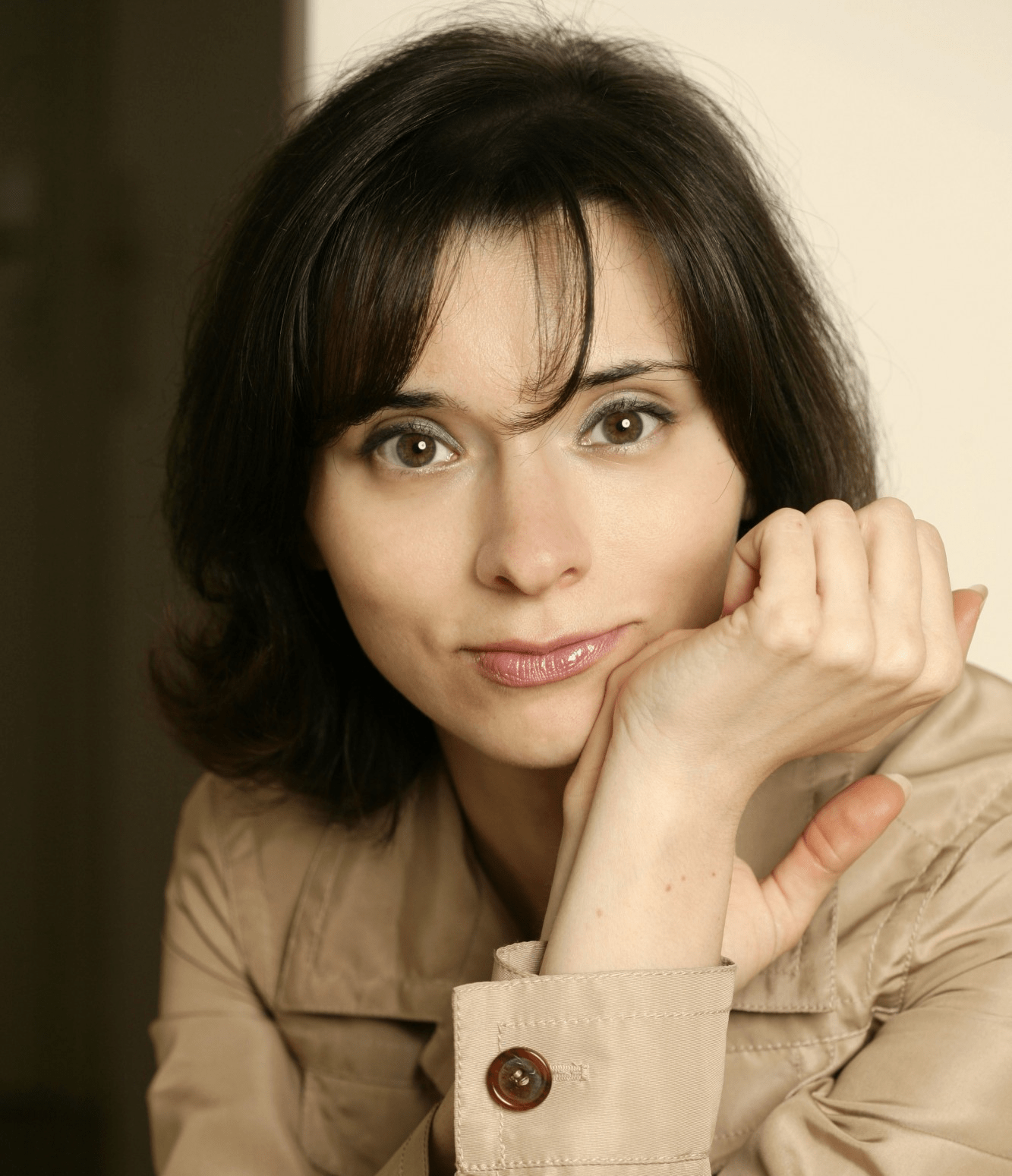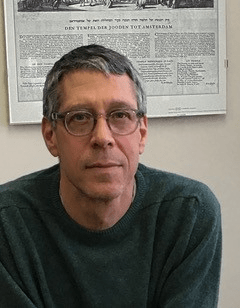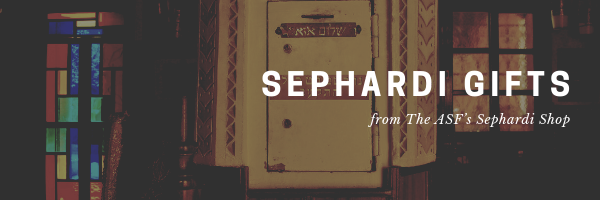Mazal Tov to the ASF’s New Board Members: Osnat Gad, Lauren Gibli, Arthur Godiva, and Carlos M. Gutierrez!
Click here to dedicate a future issue in honor or memory of a loved one
Upcoming Events ◊ ASF Sephardi Shop ◊ Donate ◊ Sephardi Ideas Monthly ◊ ASF IJE ◊ ASF Sephardi House ◊ Archive
The Sephardi World Weekly is made possible by Daniel Yifrach, Rachel Sally, Professor Rifka Cook, Maria Gabriela Borrego Medina, Rachel Amar, Deborah Arellano, & ASF VP Gwen Zuares!
Join the Sephardi World Weekly Global Design Competition!
“The Final Days of the Jewish Community in Gaza”
By Arik Itsis, The Librarians
The Beach in Gaza, 1924
(Photo courtesy of The Librarians)
Moshe David Gaon (1889-1958) was an educator, journalist, poet, and scholar of Greater Sephardi Jewry who made Aliyah to Israel from Travnik, then part of the Austro-Hungarian Empire, now part of Bosnia, shortly before WWI. His son, Yehoram, grew up to become one of Israel’s most legendary entertainers.
After making Aliyah, Moshe served as the general secretary of the Sephardi Jewish community in Jerusalem, and in addition to writing a comprehensive bibliography of Ladino newspapers and a lexicon of Eastern rabbis in Eretz Israel, he collected newspapers in Hebrew and Ladino, corresponded with scholars and institutes, and stockpiled documents from North African Jewish communities together with notes and items from Sephardi communities in Jerusalem, Tsfat, Tiberias, and Gaza. Today, this treasure store of historical information constitutes the Moshe David Gaon archive, which thanks to the Samis Foundation is now in the process of being catalogued and made accessible at the National Library of Israel.
In a recent blog post for “The Librarians,” the National Library of Israel Magazine, the archivist in charge of the catalogue, Arik Itsis, shared items that shine light on Gaza’s Jewish forgotten Jewish community, such as
… a letter from 1926 discovered in the archive… Mr. Dromi, secretary of the Hebrew community council in Gaza, provided Gaon with details on the state of the community. Dromi noted that it had its own elected council, and numbered 51 people, Ashkenazim and Sephardim alike, in contrast to the period before the war, when there were close to a hundred Jews in Gaza.
One fascinating but difficult-to-imagine item from early 20th C. Jewish history in Gaza is Jewish-Muslim spiritual collaboration in defense against Christian missionizing:
Rabbi Nissim Ohana served as the rabbi of the community… He later served as a rabbi in New York, Egypt, Malta and Haifa. During his stay in Gaza, Rabbi Ohana wrote a book, in collaboration with the Mufti (Muslim Leader) of Gaza, Sheikh Abdullah al-Alami, entitled Know What You Will Answer Epicurus: Clear Answers from the Bible Itself. The purpose of the book was to provide Jews and Muslims with replies that could be used to counter the efforts of Christian missionaries, who ran a hospital in the city at the time.
The Jewish community of Gaza was uprooted 1929 when Islamist-inspired mobs attacked Jews around the country. Jews began returning to Gaza after the Six Day War in 1967, only to be uprooted again in 2005, this time by the Israeli government.
The Sephardi Ideas Monthly looked at Jewish life in this Mediterranean costal enclave in the past. Read:
A Meditative Israeli, Rhythmically Hypnotic, Iraqi-Jewish Piyyut for Purim
Screenshot of the lyrics
(Courtesy of Daniel Rosolio/Youtube)
Daniel Rosolio and Nadav Steinberg help us get ready for Purim by maintaining the depth but going easy on the standard Iraqi pathos in their meditative, rhythmically hypnotic, and vocally sweetened version of Ezra ben Sassoon’s 18th C. Baghdadi Jewish piyyut, Ezer m’Tziyon Hayita (“You were help from Zion”). The piyyut was recorded spontaneously in the studio in the run-up to Purim in 2021.
“Rare Andalusian astrolabe discovered: What do Arabic, Hebrew inscriptions represent?”
By Koray Erdoğan, Türkiye Newspaper
The Astrolable from Al-Andalus
(Photo courtesy of Türkiye Newspaper)
Cambridge University’s Federica Gigante recently stumbled upon a “rare 11th-century astrolabe bearing Arabic and Hebrew inscriptions… in a museum in Verona, Italy.” A reflection of the intellectual collaboration between “Arabs, Jews and Christian Europeans in the medieval and early modern periods,” Gigante emphasizes the object’s cultural import:
This isn’t just an incredibly rare object. It is a powerful record of scientific exchange between ` Arabs, Jews and Christians over hundreds of years.
Signed “For Isḥaq (...) The work of Yunus,” the signature indicates that the astrolabe “circulated within the Sephardic Jewish community in Spain, where Arabic was the spoken language.”
On 13 Match the ASF opened a new exhibition “The Golden Age of the Jews of Alandalus” | “La Edad de Oro de los judíos de Alandalús” at the Center for Jewish History.
The exhibit will be inaugurated on 11 April at 6:30PM. Details about the ceremony to follow.
Sign-up Now!
~~~~~~~
The Historic Synagogues Of Turkey / Turkiye'nin Tarihi Sinagoglari
(In Turkish and English)
By Joel A. Zack
Photographs by Devon Jarvis
Drawings by Ceren Kahraman
Published by the American Sephardi Federation
This project testifies to a historic Jewish community of vibrancy and dynamism that once dotted Turkey. Dating back to Roman and Byzantine times, Jews thrived on Turkish soil, finding refuge in the tens of thousands after their expulsions from Spain, Portugal, and Italy in the fifteenth and sixteenth centuries. Joel Zack and his team have performed an important cultural service, retrieving for posterity rich testimony of the Jewish architectural heritage in Ottoman and modern Turkish History.
Spinoza: Freedom's Messiah (Jewish Lives)
By Ian Buruma
Baruch (Benedictus) Spinoza (1632–1677) was a radical free thinker who led a life guided by strong moral principles despite his disbelief in an all-seeing God. Seen by many—Christians as well as Jews—as Satan’s disciple during his lifetime, Spinoza has been regarded as a secular saint since his death. Many contradictory beliefs have been attached to his name: rationalism or metaphysics, atheism or pantheism, liberalism or despotism, Jewishness or anti-Semitism. However, there is no question that he viewed freedom of thought and speech as essential to an open and free society.
In this insightful account, the award-winning author Ian Buruma stresses the importance of the time and place that shaped Spinoza, beginning with the Sephardim of Amsterdam and followed by the politics of the Dutch Republic. Though Spinoza rejected the basic assumptions of his family’s faith, and was consequently expelled from his Sephardic community, Buruma argues that Spinoza did indeed lead a Jewish life: a modern Jewish life. To Heine, Hess, Marx, Freud, and no doubt many others today, Spinoza exemplified how to be Jewish without believing in Judaism. His defense of universal freedom is as important for our own time as it was in his.
~~~~~~~
Upcoming Events or Opportunities
The American Sephardi Federation, the Sephardic Jewish Brotherhood of America, the Sephardic Foundation on Aging, and Shearith Israel League Foundation proudly present:
Exclusive Broadcast of New York Ladino Day 2024: Bendichas Manos!
Curated by Jane Mushabac and Bryan Kirschen
Featuring:
Rabbi Marc Angel, author and editor of 38 books, and a 2023 International Sephardic Gala Honoree for his decades of remarkable community leadership.
Bryan Kirschen reading remarks from Rachel Amado Bortnick, teacher and founder of the renowned online group, Ladinokomunita, now in its 25th year with 1500 Ladino-speaking members worldwide.
Elizabeth Graver, author of the groundbreaking Sephardic novel Kantika, a New York Times Notable Book of 2023 and winner of the National Jewish Book Award in Sephardic Culture.
Sarah Aroeste, singer/songwriter, and Susan Barocas, foodwriter/story-teller, a duo whose “Savor” program of songs and talk about Sephardic cuisine is garnering raves here and abroad.
Sunday, 17 March at 2:00PM ET
On Zoom
Sign-up Now!
Tickets: $10
Since 2013, Ladino Day programs have been held around the world to honor Ladino, also known as Judeo-Spanish. This program is the 7th annual New York Ladino Day hosted by the American Sephardi Federation.
Ladino is a bridge to many cultures. A variety of Spanish, it has absorbed words from Hebrew, Turkish, Arabic, French, Greek, and Portuguese. The mother tongue of Jews in the Ottoman Empire for 500 years, Ladino became the home language of Sephardim worldwide. While the number of Ladino speakers has sharply declined, distinguished Ladino Day programs like ours celebrate and preserve a vibrant language and heritage. These programs are, as Aviya Kushner has written in the Forward, “Why Ladino Will Rise Again.”
© Ioannina, mid-19th century Sephardi & Romaniot Jewish Costumes in Greece & Turkey. 16 watercolours by Nicholas Stavroulakis published by the Association of the Friends of the Jewish Museum of Greece, Athens, 1986.
Please support the New York Ladino Day with a generous, tax-deductible contribution so we can continue to cultivate and advocate, preserve and promote, as well as educate and empower!
Sponsorship opportunities available:
~~~~~~~
Our friends at Qesher present:
Along the Silk Roads to Jerusalem: A Voyage into Bukharian Jewish History and Culture
Embark with us on an exploration of the eclectic and multilayered story of Central Asia’s ancient Jewish community—Bukharian Jews. Join us as we discover the ways in which Bukharian Jews have developed their rich culture against the backdrop of the changing societies surrounding them—including Iranian, Arab, Turkic and Russian empires. Through archival documents, music, photographs of heritage sites, and personal stories, our educator—Uzbekistan-born Ruben Shimonov—will take us on a journey through Central Asia, the Middle East, and the United States.
Thursday, 21 March at 4:00PM ET
Sign-up Now!
Tickets: $9-$18
~~~~~~~
Our friends at Kanisse present:
Megillah Reading & Purim Party 2024
Please join us for our first ever fully Sephardic/Mizrahi Megillah Reading and Purim Party! A stellar team of our community members will be reading Megillat Esther in the Syrian, Moroccan, and Iraqi traditions. The service will also be live-streamed for those joining us at a distance. Following the reading in the main sanctuary, we’ll continue the celebration in the reception hall with Persian delicacies, fine wines and Shushan-inspired vibes.
Costumes are optional but welcome!
Saturday, 23 March
Megillah Reading at 9:00PM ET
Purim Party to follow at 10:00 PM ET
@Tribeca Synagogue
49 White Street (between Broadway & Church Street)
Sign-up Now!
Tickets: Free or $18-$101
Any registrations at the Supporter or Sponsor levels will include a 10% donation to Leket Israel, the country’s leading food rescue organization, helping those in need to fulfill the holiday’s mitzvah of Matanot La-Evyonim (“gifts to the poor”).
~~~~~~~
Our friends at Qesher present:
The Jews of Yemen and a Journey on the Magic Carpet
The Jewish community of Yemen has existed since antiquity, but today comprises just a handful of affiliated members. The past century saw the largest waves of immigration to Israel, among which my grandmother took part. Through conversations with her, I learned both of her personal ordeal as a child thrust into the unknown, as well as the changing way of life for Yemenites in Israel. They and their descendants have made their mark in Israeli society and have contributed much to religious study, music, crafts and, of course, food.
Thursday, 28 March at 3:00PM ET
Sign-up Now!
Tickets: $9-$18
~~~~~~~
The American Sephardi Federation and Jewish Lives at Yale University Press present:
Why Spinoza Matters Now: Truth and Freedom in America Today
Join us for a lively and timely discussion celebrating the launch of Ian Buruma’s new book, Spinoza: Freedom’s Messiah. Buruma will be joined on the panel by Steven Nadler, Rebecca Newberger Goldstein, & Clémence Boulouque
Sunday, 31 March at 3:00PM ET
In-Person @ the ASF - Center for Jewish History
Sign-up Now!
Tickets: $15-$500
350 years after his death, the philosophy of Baruch Spinoza remains vitally relevant — especially in this period of deep political division and with the threat to liberal democracy not only in Europe and elsewhere, but right here at home. Spinoza was the most open and important proponent of democracy, toleration, politics free from religious sectarian interference, and freedom of expression in the early modern period. He was also “cancelled” (Herem) by Amsterdam’s Jewish community.
See this New Yorker review, “Baruch Spinoza and the Art of Thinking in Dangerous Times,” as well as Buruma’s latest, “The 17th-Century Heretic We Could Really Use Now,” in The New York Times

Bard College Professor Ian Buruma, author of Spinoza: Freedom's Messiah (Jewish Lives – Yale University Press)

Moderator, Columbia University Professor Clémence Boulouque, author of Another Modernity: Elia Benamozegh’s Jewish Universalism (Stanford University Press)

University of Wisconsin-Madison Professor Steven Nadler, author of Spinoza: A Life (Cambridge University Press) and Menasseh ben Israel: Rabbi of Amsterdam (Jewish Lives – Yale University Press)

Dr. Rebecca Newberger Goldstein, author of Betraying Spinoza: The Renegade Jew Who Gave Us Modernity (Jewish Encounters Series)
~~~~~~~
The American Sephardi Federation presents:
Socrates, Moses, and the Long Fight Against Idolatry
Join us for a fascinating discussion celebrating the launch of Matt Gatton’s new book, The Shadows of Socrates: The Heresy, War, and Treachery Behind the Trial of Socrates.
Sunday, 14 April at 4:00PM ET
In-Person @ the ASF - Center for Jewish History
Sign-up Now!
Tickets: $15-$500
The trial of the ancient Greek philosopher Socrates is widely considered the most famous trial of all time. At age 70, he was charged with impiety (a religious crime) and corrupting the youth, but the reasons for these charges were left unexplained, as the prosecution’s case was not recorded. There’s a reason for this: Socrates triggered the first great battle between philosophy and religion when he launched a searing critique of Athens’ most important and secretive idolatrous cult. Socrates has more in common with Moses, Maimonides, and Spinoza than you might ever have imagined. Sometimes the light of true reason must fight in the shadows.
~~~~~~~
The American Sephardi Federation presents:
Convergence: Arabic, Hebrew, and Persian Calligraphy in Conversation
Featuring the multilingual art of Ruben Shimonov Convergence creates a visual world where Hebrew, Arabic, and Persian languages interact with, and speak to, one another; a world where stylized letters and words dance together on the page; a world where cultures, religions, communities, and philosophies intersect.
Juxtaposing cognates from these ancient West Asian languages, artist Ruben Shimonov encourages the viewer to explore the deep-rooted connections between these tongues, as well as the multilayered and transnational identity of the artist himself.
On View in the Leon Levy Gallery
through 31 May 2024
@ the Center for Jewish History
~~~~~~~
The American Sephardi Federation and Mimouna Association’s Rebuilding Our Homes Project present:
Re-Creation: Judaica by Moroccan Muslim Artisans
Explore the exhibition of Judeo-Moroccan art, Moroccan Judaica, cultural and religious objects, including Menorot, Mezuzot, Yads, Shabbat Candleholders, Seder Plates, Hallah Covers, and much more.
On View through 31 May 2024
@ the Center for Jewish History
As Moroccan Jewish populations largely left the mellahs (Jewish quarters) in the latter half of the 20th century, there was a danger that not only designs but even the traditional artisanal techniques needed to create them would be lost. Passed down from one artisan to another and perfected over time, these designs and techniques. ranging from vibrant patterns to intricate metalwork and soulful wood carvings, are expressions of Moroccanity and reflect the individual character of each city. The materials and craftsmanship of Rabat are different than Fez, and Essaouira is distinct from both.
Mimouna Association and the American Sephardi Federation’s Rebuilding Our Homes Project, a multi-year USAID-supported New Partnerships Initiative, brought three notable experts-Ms. Zhor Rehihil, Ms. Deborah Koenigsberger Gutierrez, and Ms. Meryem Ghandi to train Moroccan Muslim artisans in the history of Judeo-Moroccan art and guided them in re-creating Moroccan Judaica, which encompasses a diverse array of cultural and religious objects, including Menorot, Mezuzot, Yads, Shabbat Candleholders, Seder Plates, Hallah Covers, and much more.












